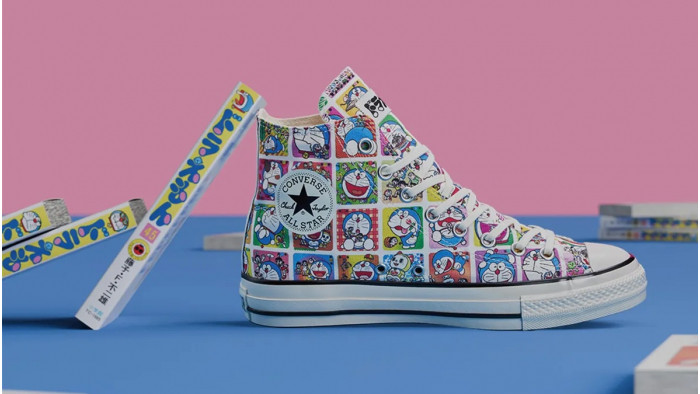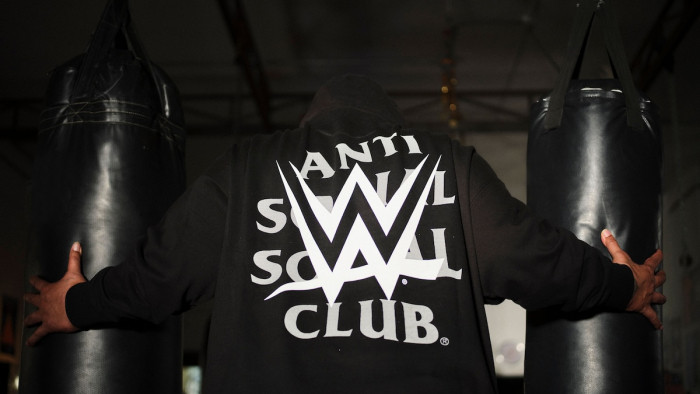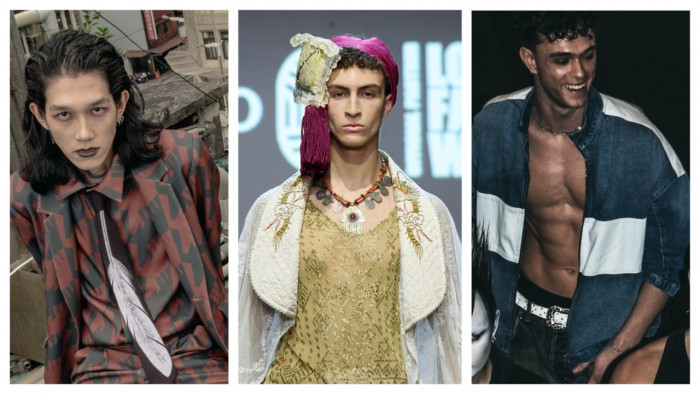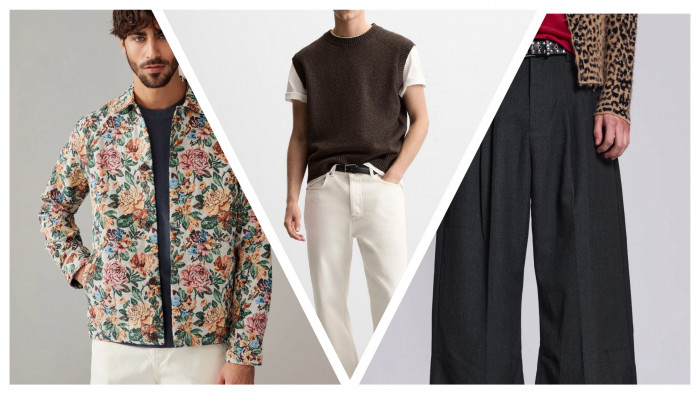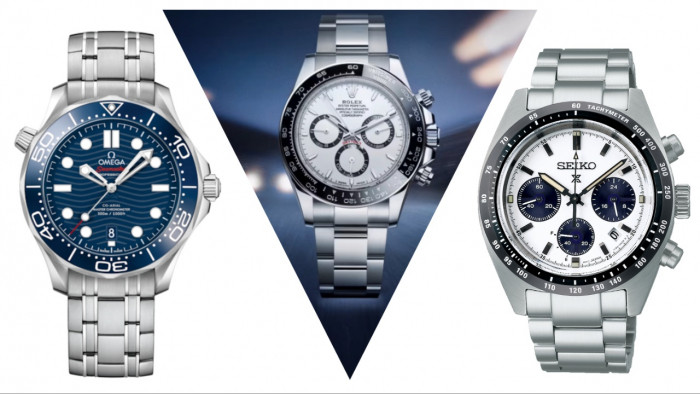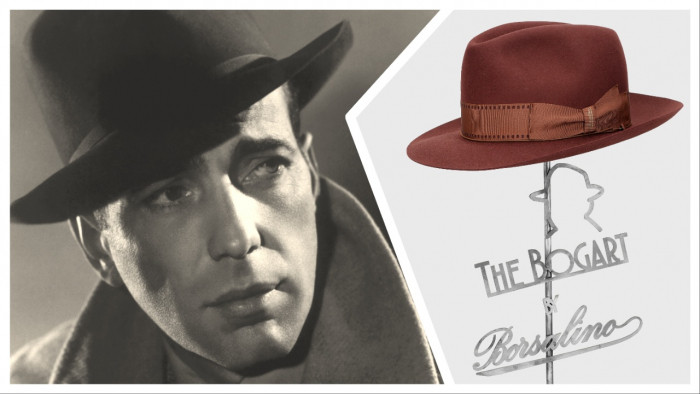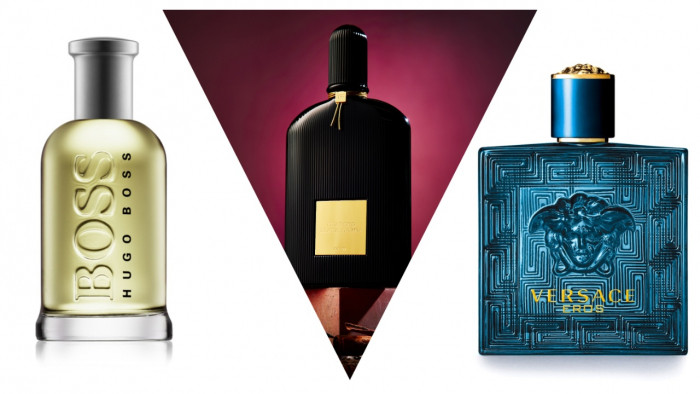How the hell did tracksuits become so fashionable?
Joe Madden explores how the humble leisurewear staple ended up a style icon


Joe Madden explores how the humble leisurewear staple ended up a style icon
Come the Apocalypse, all that’ll be left are cockroaches and tracksuits. The humble sporting two-piece has had all manner thrown at it over the years – snobbish mockery, tabloid disdain, the vagaries of fashion, Savile – and it’s survived the lot. In fact, the tracksuit is not only surviving, it’s thriving: the ‘athleisure’ boom has seen the sportswear market expand by 42 per cent over the past seven years to hit a $270bn (£203bn) annual turnover, and it’s expected to grow by a further 30 per cent – or $83bn – by 2020. With the sneaker market now saturated (according to a 2015 Goldman Sachs report) it’s tracksuits that’ll be bringing in much of that bank. That’s a whole lotta drawstrings.
Just a few short years ago a tracksuit was considered sartorially beyond-the-pale for most Britons: fine for skunked-up teens blasting distorted garage at the back of the bus, but firmly off limits to the rest of us. The Britain of 2016, however, is unabashedly mad for tracksuits: streetwear obsessives queue overnight for Adidas x Palace collabs; pinch-faced fashionistas covet Vetements two-pieces; gym-swole posh lads wear drop-crotch joggers and longline hoodies; and shop shelves heave with designs co-signed by celebrities: Pharrell, Beyoncé, Stormzy, Kanye... If it’s got zips, pop-studs, logos and elasticated cuffs, we’ll have it. Not only that, we’ll engage in a protracted eBay bidding war to get it.
“In tracksuit terms, I’d say London is two years ahead of the curve,” says Rich Evans, creative director at Rich London, a marketing agency that’s relaunched heritage sportswear brands such as Kappa, Schott, Fila and Champion. “Japan has a few guys who are on it and New York is catching up, but Britain is leading the way.”
There’s a half-decent chance that you’re wearing a tracksuit – or half of one, anyway – while reading this. I’m certainly wearing one while sitting at home writing it. So, uh... how did this happen?
A history lesson

Backstory flashback: it’s 1967, and footwear company Adidas is taking its first steps into apparel production with a tracksuit co-designed by midfield maestro Franz Beckenbauer. Athletes had utilised ‘warm-up’ clothing since Le Coq Sportif first introduced sweatpants in the Twenties, but this Adidas x Beckenbauer collab birthed the modern tracksuit as we recognise it today: mass-produced, heavily branded, celeb-endorsed.
Herr Beckenbauer did not, however, convince young Britons to immediately swap their flapping flares for snug joggers. Tracksuits did become an increasingly common sight on the backs and butts of athletes, footballers and hirsute provincial PE teachers during the Seventies, but you’d have been as likely to don one for a night down the pub as you would a wetsuit. It didn’t help that the thin polyester and ‘intimate’ fit of Seventies men’s trackie bottoms meant that they’d impart way too much information to anyone unable to avert their gaze from the wearer’s crotch.
But, as the Seventies boogied into the Eighties, the dovetailing of three unrelated cultural phenomena caused a huge surge in UK tracksuit sales – and the first of these was the country’s fascination with the US’s new-fangled hip-hoppin’ craze.
Today, Sean Crossey runs Manchester PR agency Blue Soap, but back in the early Eighties he was a tweenage breakdancer in Morecambe b-boy crew The Westgate Posse – his every spare moment spent perfecting windmills, caterpillars and up-rocks on lino bought from Do It All. In those pre-internet times, Crossey and his fellow breakers would obsessively pore over scarce pointers on authentic hip-hop style.
“The two Breakin’ films were OK, but the clothes in them were terrible,” he recalls. “The film Beat Street was a go-to for dress sense, though. They wore Puma tracksuits along with fat-laced Puma States or Adidas Superstars. Run DMC were also a huge influence: those classic Adidas tracksuits.” The look was about functionality as much as freshness. “The tracksuits definitely aided breakin’, especially backspins and windmills. Those synthetic fabrics were perfect on lino.”


The second factor at play was the rise of the football casual, and the resulting flood of obscure (at the time) Italian sportswear labels on to British terraces. Imported by soccer-obsessed Italophiles during expeditions to the continent, tracksuits from the likes of Fila, Ellesse and Sergio Tacchini became the unofficial uniform of Britain’s hardcore footie fans. With the national press up in arms over hooliganism at matches, wearing such gear was, in part, a cheeky embrace of that bad-boy image. “In Italy, tracksuits were an organised crime thing,” says Evans. “You had Mafia guys dressing head-to-toe in Sergio Tacchini – and that had an appeal for working-class lads over here.”
The final element behind the tracksuit’s rise was the jogging boom which, like hip-hop, was a US import. It’s hard to imagine now, but there was a time when Britain’s evening streets weren’t carved up by legions of runners; if you were gunning down a pavement pre-1978 you were either pursuing a bus or fleeing a Bad Thing.
But then jogging fever gripped Britain, and lifestyle-chasing yuppies began circuiting parks in tracksuits from ‘upmarket’ brands such as Lacoste and pastel-pushers Dash. With the aspirational middle classes on board, the tracksuit looked set to enter the Nineties triumphant and ubiquitous. But then calamity struck, in the crinkly, billowing shape of the shellsuit.
By some margin the most shameful chapter in British sartorial history, the shellsuit was plasticky, gaudy and gratingly swish-swishy. It made the wearer look like a Transformer that turned into a beanbag. If the tracksuit was Run DMC blowing Live Aid away with King Of Rock, the shellsuit was Gazza performing Fog On The Tyne on Top Of The Pops, gooning around in acres of lowbrow fabric while rapping “Sittin’ in a sleazy snack-bar suckin’ sickly sausage rolls.”
Shellsuits proved too noisy – both visually and sonically – for even the hip-hop crowd. “They were just awful,” sighs ex-breaker Crossey. “I’d never have worn one. They looked daft and the colours were always terrible.”
Shellsuits had a thankfully brief moment in the spotlight, being swiftly done in by their breathtaking sexlessness and the countless scare-stories about them going up like the Hindenburg if they so much as brushed a lit Benson. But the damage to the tracksuit as a concept was done, and its cultural stock declined over the next decade-and-a-half (albeit with a brief plateau circa 1994-1996, courtesy of Britpop's predilection for vintage Seventies trackie tops). For comedians looking to mock the working classes and newspapers looking to demonise them, the tracksuit became a visual shorthand for the shiftless criminal bogeyman known as the chav.
“Tracksuited teens were vilified by the media,” says Nina Manandhar, author of What We Wore: A People's History Of British Style. “Even now, if you’re a young man in a tracksuit you’ll undoubtedly be treated differently by the public and authority figures. As someone who’s worked with young people for more than 10 years it’s so ridiculous that I find it hard to get my head around.”
Harry Enfield's Scousers (“Cyalm down cyalm down”) opened the mockery floodgates in 1990, followed by the pointedly tracksuited likes of Vicky Pollard, Ali G, Lee Nelson and Viz’s Rat Boy and Kappa Slappa (later Tasha Slappa, following legal advice). Individually, these creations could raise a laugh – Lee Nelson aside, maybe – but the whole ‘let’s laugh at tracksuited peasants’ schtick soon started to feel like punching-down comedy of the snidest kind. And when Prince William wore a ‘chav tracksuit’ to a fancy dress party at Sandhurst in 2006, it felt like yeah, maybe that joke’s over now.
The sports revival

Bad times, then, but the only way was up for the tracksuit. The factors leading to its current renaissance were, again, three-fold. The first: a huge surge in Britons embarking on intense (and intensely Instagram-friendly) fitness regimes. UK spending on gym memberships rose by 44 per cent between 2014 and 2015 alone; everyone wanted to look like they were fresh from grunting out some reps, and a tracksuit is perfect for projecting an aura of pec-twitching virility.
The second factor was grime’s unexpected comeback: flatlining circa 2010, it’s enjoyed a bold resurgence over the past three years, and brought tracksuits-as-streetwear along with it. Grime big-hitters such as Novelist, Stormzy and Skepta proudly rep two-pieces in their lyrics, videos and selfies – and, rather than wallowing in unattainable luxury, US rapper-style, they’re celebrating sportswear that’s within reach of most of their fanbase. “A plain Nike tracksuit from JD Sports: that’s the classic London grime tracksuit,” says Manandhar. That look went prime-time at the 2015 Brit Awards, when Kanye West was joined onstage by 25 UK grime artists to form a lairy mass of bouncing hoods and drawstrings.
Third and final factor: the unstoppable athleisure/sport luxe trend, putting tracksuits on to people who’d previously have boked at the very thought: fash-mag disciples, studiedly cool celebs, bleeding-edge Peckham hipsters. At one end of this trend is the adoption of ‘fallen’ sportswear brands whose pariah status is all part of their #edgy appeal. “You look at Kappa in the late Nineties, and that’s about as low as things can get for a brand,” says Evans. “But the cool kids now, they’re into the irony of wearing Kappa. It’s that classic 20-year cycle of something being cool, then very uncool, then cool again because of the uncoolness. These labels are always worried about the press bringing up Vicky Pollard or whatever, but all that’s almost part of the appeal.”
Turning things around
Evans believes that the working and middle classes are in the midst of a mutual style-swap. “It’s all about well-off lads wanting to look like they’ve got no money, and vice versa. That hipster look of beards and tattoos, that’s moved over to the working-class lads now, and the middle-class lads are getting into tracksuits and so on.”
And at the other end of athleisure are the high-fashion likes of Y3, Vetements and Alexander Wang, bestowing cool on lowly prole clobber with reassuringly demented price tags. Squeamish about twinning those £755 Versace trainers with plain black trackie bottoms from Foot Locker? Well, how about plain black trackie bottoms from Hood By Air that cost £380? That’s the ticket! (I wish I was making these prices up.)
Unsurprisingly, some veteran tracksuit fans eye these moneyed newbies with suspicion. “They never seem to wear them right,” says Crossey. “Sport aside, a tracksuit has always been a working-class, street thing for me.”
“I do find it annoying that people are flogging tracksuits for 2k apiece now,” says Manandhar. “But then again, tracksuits have always had an element of aspiration to them: they’re all about flashiness and straight-off-the-peg freshness.”
However la-dee-dah it may get, though, the tracksuit will always retain a certain street-level cachet. “Clothes have lost much of their power to shock,” continues Manandhar, “but the tracksuit still has a rebellious edge, perhaps because there are so many things you can’t do in one. You can’t turn up to work in one, get married in one, teach an English class in one. It’s the opposite of an authoritative uniform. The day my doctor wears a tracksuit to work, it’ll have lost that appeal.”
Words by: Joe Madden
Image credits: YOUNG THUG (C) Mr. Shabazz, Getty, Gucci, Selfridges
